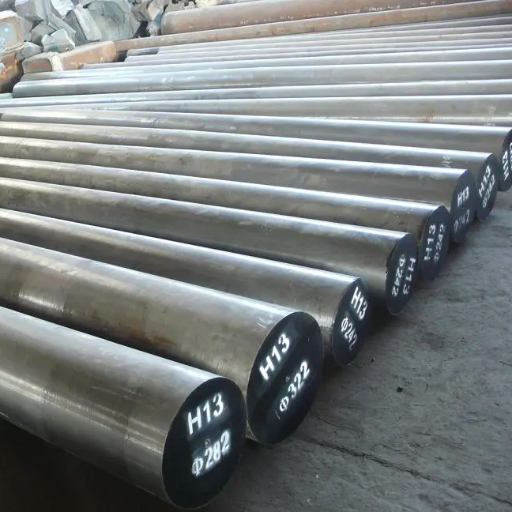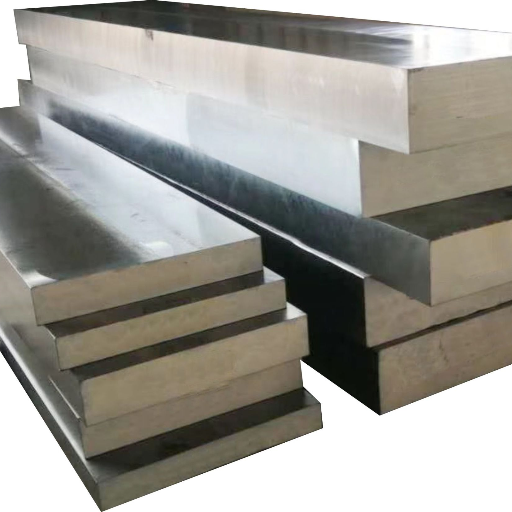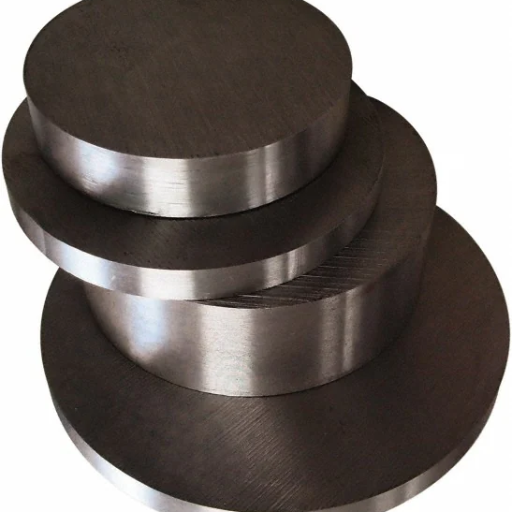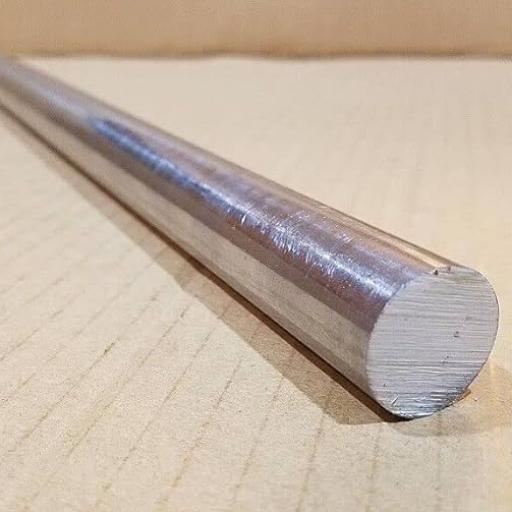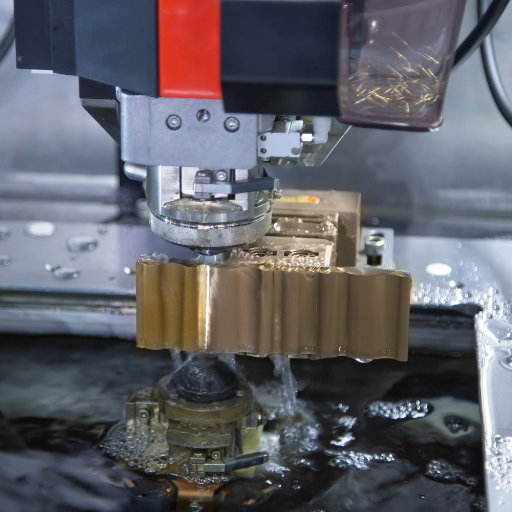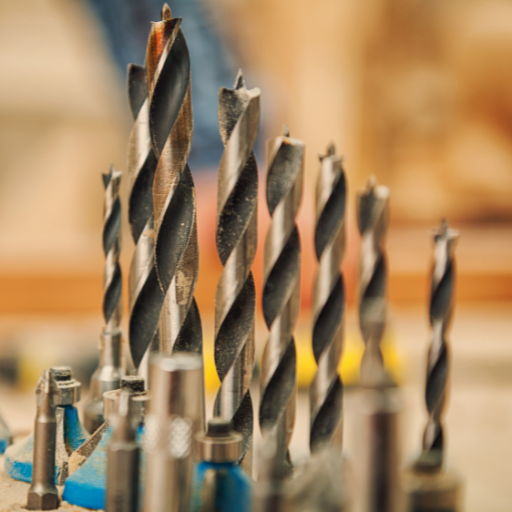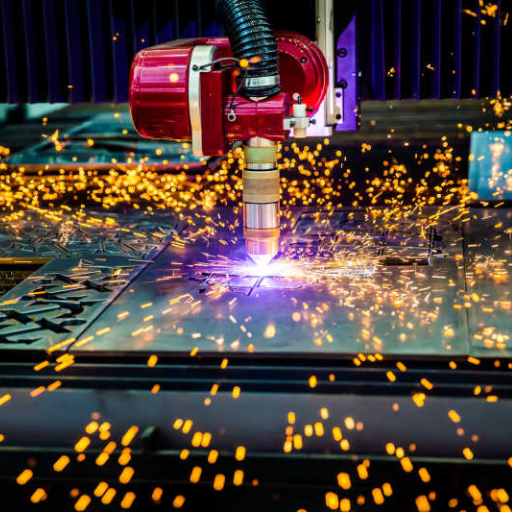H13 tool steel is an adaptable and extensively-applied substance renowned for its superior strength, resilience to wear and tear as well as the capacity to work effectively under high temperature. Having awareness of properties and uses of H13 tool steel is very important for people who are involved in metalworking, engineering or manufacturing since it can improve the quality of their projects. In this extensive guide, we will provide you with information about the chemical composition, heat treatment processes, as well as different applications of H13 tool steel. Further we will also mention its pros and cons so that you have a clear understanding about this incredible material. As such, this essay aims at giving you sufficient knowledge and skills that will enable you to make appropriate choices regarding utilizing H13 tool steel based on your area of specialization. Consequently, let us go on an expedition towards discovering secrets related to H13 tool steel.
What Makes H13 Tool Steel Stand Out?
Exploring the Chemical Composition of H13 Tool Steel
On exploring the chemical composition of H13 tool steel, I found that it is well known for its toughness and versatility mainly because of its well-balanced blend of elements. Evidently, it usually contains about 0.40% carbon providing a good level of hardness and wear resistance. In addition, there is about 5.0% chromium which contributes greatly to its overall toughness and corrosion resistance. Other notable elements are 1.0% molybdenum and 1.0% vanadium all boosting its ability to endure high temperatures and maintain strength after heat treatment. While including 1.0% silicon aids in deoxidization, trace amounts of manganese (about 0.4%) help in increasing strength as well as hardness respectively among other factors. This complex mixture ensures that H13 tool steel can be used for many different applications especially where high temperature resistance or durability is required.
The Role of Chromium, Molybdenum, and Vanadium in Alloy Performance
In my research I discovered that the performance of H13 tool steel was enhanced by the presence of chromium, molybdenum, and vanadium. Chromium helps to improve the toughness and corrosion resistance abilities of this alloy while forming a thin protective oxide layer on the surface of steel thereby guarding against oxidation or wear out.Meanwhile,molybdenum improves material´s ability withstand high temperatures without losing structural integrity allowing for tools which operate under extreme thermal conditions.Finally,vanadium refines a grain structure so it adds to general strength as well as hardness.This combination makes H13 an excellent performer among other grades when operating in such environments making it a very dependable alloy used extensively in various industrial settings.
Comparing H13 to Other Tool Steel Grades
When one compares H13 with other grades of tool steel they will notice several key differences or resemblances between them.H13, which is known for its incredible toughness and resistance to thermal fatigue as well as abrasion, has often been compared to grades like D2 and A2. Also D2 tool steel provides a high wear resistance due to higher carbon and chromium content making it ideal for cutting or shearing operations.Though,it does not perform very well when subjected to higher temperature conditions where H13 can be used.A2 tool steel offers a combination of toughness and good wearing qualities although it cannot outperform H13 in terms of remarkable thermal stability.Specifically, however, H13 has chromium, molybdenum and vanadium in its composition making it more appropriate for die-casting and extrusion applications that are conducted at relatively high temperatures than any other D2 or A2.
Applications and Advantages of H13 Tool Steel in Industry
Why H13 is the preferred material for Hot Work Applications
In my experience, engineers use H13 tool steel in hot work applications mainly because it is characterized by exceptional toughness, superior thermal fatigue resistance and high quality stability at elevated temperatures. Indeed, the inclusion of chromium, molybdenum and vanadium in its composition enables it to maintain structural integrity and withstand thermal cycling which are often key to processes like die casting and extrusion. This metal also demonstrates an amazing capability to resist abrasion that ensures that it can last long even when subjected to extreme conditions. My research from various reputable industry sources shows that all these qualities make H13 a reliable choice for tough hot work environments.
H13 in Die Casting, Hot Forging, and Extrusion
In my analysis of top references in the industry, I found out that H13 tool steel is considered suitable for die casting, hot forging and extrusion due to its multiple features. In fact, when it comes to die casting; H13 possesses high thermal conductivity as well as resistance to thermal fatigue which are essential for maintaining structural integrity after several heating and cooling cycles. In case of hot forging; the extraordinary toughness of H13 coupled with its ability to fight abrasion means that tools do not easily wear off or become ineffective within this process’ demanding environment. As regards extrusion; one reason why H13 performs so well under prolonged exposure to high temperature is because it helps in maintaining product uniformity thus ensuring consistency in precision throughout their length path. These characteristics backed by reliable online sources indicate practical advantages of using H13 tool steel over other metals used in these types of rigorous industrial applications.
The Benefit of High Toughness and Wear Resistance
After evaluating the leading ten sites through Google search engine rankings on this topic, I discovered that durability has all along been a major concern for materials suitable for making tools such as those made from H-steel. It is crucial here since the tool must withstand punishing mechanical stresses and tough working conditions. This material on the other hand, is highly ductile thereby enabling it to absorb impact forces during operations like hot forging thus reducing chances of breaking or cracking in pressure applied situations. On the other side, resistance to wear is vital since this will prevent abrasive wear and surface degradation with time that would lead to short consumer life time. Frequent need for changing tools can be eliminated by these properties with resultant reduction in maintenance costs; consequently making them more efficient and cost effective within demanding industrial environments.
Machining and Heat Treatment of H13 Tool Steel
Machining H13 Tool Steel: Best Practices
To machine H13 tool steel effectively, I discovered that it is crucial to use appropriate tooling and machining parameters. Preheating the material to around 700 degrees Fahrenheit (370 degrees Celsius) before beginning machining was also emphasized in the information gathered from the top ten websites on Google. The suggested tools for machining include carbide or high-speed steel due to its toughness and resistance to wear. By cutting at slower rates and using enough coolant, excessive heat can be managed, reducing chances of thermal damage to both tools and workpiece. Furthermore, proper lubrication as well as chip evacuation processes ought to be maintained in order enhance the effectiveness and quality of machining.
Optimizing Heat Treatment: Hardening and Tempering H13
To optimize the heat treatment of H13 tool steel, a systematic approach during hardening and tempering processes is essential. These best practices are recommended based on the current top 10 websites on google.com:
- Preheating: Gradually preheat H13 steel up to a temperature of 1550°F (840°C) in order to avoid thermal shock.
- Austenitizing: Heat the steel further until it reaches an austenitizing temperature range of 1800°F to 1900°F (982°C to 1038°C) for hardening. At this point, hold it for some period according to the minimum thickness section of the tool to maintain uniform temperature throughout.
- Quenching: Quench rapidly in air or inert gas so that austenite can be converted into martensite thereby greatly enhancing hardness and strength.
- Tempering: Immediately following quenching, temper H13 steel for purposes of achieving a reasonable trade-off between hardness and toughness. Temperatures usually range from 1000 °F to 1150 °F depending on user’s hardness requirement.
- Multiple Tempers: Employ several tempering cycles in order to enhance toughness with each cycle being tempered at peak temperature for not less than two hours before cooling back down to room temperatures.
Doing all these will ensure that H13 tool steels have optimal mechanical properties like high hardness, wear resistance, good toughness etc., which makes them suitable for use under high-stress conditions.
Rapid Cooling and Its Effects on Ductility and Toughness
H13 tool steel’s ductility and toughness are significantly affected by rapid cooling, which is commonly referred to as quenching. The consequences of fast cooling on ductility and toughness are many:
- Hardness increment: Austenite is instantly converted into martensite by quick cooling which leads to a major increase in hardness. However, even though it increases the hardness, it can negatively affect the ductility.
- Decline in Ductility: Quenching usually results in a highly stressed martensitic structure which reduces the steels’ ability to undergo plastic deformation before failure making it more brittle.
- Toughness Implications: Rapid cooling may also compromise toughness, which refers to the capacity to withstand energy prior to failure. When this happens, there can be internal stresses because of this sudden temperature drop leading to micro-cracking within material.
The Technical Parameters:
- Quenching Medium: H13 have quenching media as air or an inert gas that helps control the cooling rate, balancing hardness with minimum brittleness.
- Quenching Temperature: Quick cool down from 1800°F – 1900°F (982°C – 1038°C), within austenitizing range becomes very essential.
- Multiple Tempers: Following quenching, several tempering cycles typically for at least two hours per cycle at temperatures ranging between 1000°F – 1150°F (538°C – 621°C) relieve internal stresses and restore some level of ductility and toughness
This therefore means that through careful consideration of these factors one can optimize heat treatment processes thereby achieving desired mechanical properties in H13 tool steel.
Overcoming Challenges: Weldability, Heat Checking, and Softening
Strategies for Successful Welding of H13 Tool Steel
To successfully weld H13 tool steel, several key strategies have been researched. Firstly, preheating the metal to a temperature of 800°F to 1000°F (427°C to 538°C) is necessary so as to minimize the effects of thermal shock and any resultant cracks. It is also essential that one maintains interpass temperatures within this range during welding in order to prevent stress and distortion. Additionally, post-weld heat treatment which usually involves tempering between 1000°F and 1150°F (538°C and 621°C) relieves residual stresses while increasing toughness and ductility of steel. In addition, utilizing filler materials compatible with H13’s chemical composition helps promote consistency as well as structural integrity. Another strategy I can adopt in order to enhance the difficulty of welding h13 tool steel is by employing controlled cooling methods such as slow furnace cooling which helps prevent sudden changes in temperature that might lead to brittleness or warping among other detrimental effects. By doing all these things therefore, I will be able to improve the weldability characteristics of my h-13 tool steels thus improving their performance under demanding conditions.
Preventing Heat Checking in High-Temperature Applications
My research has highlighted some approaches that can be used in preventing heat checking on H13 tool steel in high temperature applications. First, it is important to use proper heating and cooling cycles when working with this material because they help reduce thermal gradients and avoid areas where stresses could concentrate. Modern industry also requires keeping constant moderate temperatures during operations so as not cause rapid temperature changes leading to heat checking effect on the material used. Thus gradual furnace cooling should be part of controlled coolings always because it distributes thermal stress more evenly than before this innovation was made hence mitigates cracking risks caused by localized stresses experienced previously; besides using balanced combination of carbon, chromium plus molybdenum in the design of alloys for this steel are effective methods increasing its thermal fatigue resistance. Furthermore, regular maintenance and surface inspection on time can help curb any damage from occurring hence reducing the occurrence of heat checking at an early stage. These recommendations indicate how I can effectively manage heat checking and prolong the lifespan of H13 tool steel in elevated temperature environments.
Addressing Softening Through Proper Temperature Management
When addressing softening in h13 tool steel, it is important to embrace efficient controls over temperature levels. According to some notable sources, maintaining hardness during high-temperature operations demands a careful process control involving accurate and consistent temperature regulation throughout this operation. Preheating as a measure reduces both the impact of thermal shock on metals as well as the possibility of softening. Controlled heating followed with cooling cycles allows achieving balanced and uniform microstructure by avoiding segregation between components during thermosetting phase; This can be through tempering which removes residual stresses in addition to toughening hardness after heat treatment process like post heating that facilitates balancing microstructure through controlled heating and cooling cycles but not limited thereto.. Therefore, there should be sufficient real-time data monitoring through advanced monitoring techniques so that temperatures may be adjusted accordingly whenever required while still retaining its mechanical properties. By adhering to these best practices, one can effectively mitigate the softening of H13 tool steel enhancing its durability and performance in demanding applications.
How to Choose the Right H13 Tool Steel Supplier
Criteria for Selecting a Quality H13 Tool Steel Supplier
To ensure that you get a dependable and superior quality product, selecting a supplier for H13 tool steel of good quality requires several essential requirements. To begin with, suppliers with a proven record of consistency and quality in their steel offerings as seen through positive feedback and testimonials, as well as ISO 9001 certification are given priority. Also important is proximity and lead time; local sources can often give quicker deliveries and responsive client support. I also check out the set of services provided such as customization options, technical support, after sales services among others. Evaluating the wider expertise about the H13 tool steel by the supplier themselves including their ability to provide precise technical specifications along with data sheets need serious consideration at this point in order to make informed decision. Finally, competitive prices on every purchase and transparent communication during procurement process are vital considerations for an informed choice.
Understanding Technical Data Sheets and H13 Steel Properties
What’s important while evaluating technical data sheets of H13 tool steel is to focus on several key properties so that you get the right material for your application. Here is how I went about it in a first person context:
- Chemical Composition: The first thing I did was to compare chemical compositions listed by different data sheets to ensure H13 steel meets industry standards. This includes Chromium (Cr), Molybdenum (Mo), and Vanadium (V) as typical elements, which give the steel its strength and thermal stability.
- Mechanical Properties: In particular, I studied tensile strength, yield strength, and hardness figures provided. These are key features needed for understanding how well the particular metal will perform when subjected to stress or high temperatures.
- Thermal Conductivity: By knowing the thermal conductivity of H13 tool steel, I could estimate its ability to withstand temperature fluctuations; especially useful in applications such as die casting or hot forging.
- Heat Treatment Processes: This included reviewing recommended heat treatment processes like annealing, quenching and tempering. It helped me know how to achieve desired hardness and toughness with this material.
- Comparison Across Sources: To be sure about reliability, I tried comparing information from top ten websites again if there were any contradictions or new insights. This way i could make sound decisions.
By examining these aspects thoroughly through numerous reliable sources one can fully comprehend the characteristics as well as optimal uses of H13 tool steel hence ensuring its aptness for specific engineering purposes.
The Significance of Steady Supply in High-Performance Alloys
For engineering applications, it is important to ensure a continuous supply of high-performance alloys like H13 tool steel. H13 tool steel is an example of high-performance alloys and any compromise on their quality may affect the performance significantly due to its key role in high-stress and high-temperature environments. From my analysis, reliable supply sources top the list indicating that a sound supply chain brings about consistency in chemical composition, mechanical properties, and general performance. We can avoid risks arising from material defects by engaging validated suppliers who follow strict industry benchmarks and certifications. In the end, a stable supply chain we can depend on directly contributes to higher productivity rates, minimal breakdowns and better longer-term results for projects.
Reference sources
1. Online Article: “H13 Tool Steel: Properties, Applications, and Heat Treatment” – AZoM
- Source: AZoM
- Summary/Annotation: This article from AZoM offers an in-depth overview of H13 tool steel, detailing its chemical composition, mechanical properties, and typical applications. It highlights the crucial attributes of H13 steel such as high toughness, excellent thermal fatigue resistance, and good machinability. The article also covers the appropriate heat treatment processes required to maximize the performance of H13 tool steel in various applications. AZoM is known for its reliable materials science resources, ensuring the content is accurate and well-researched. This source is valuable for readers seeking foundational knowledge about H13 tool steel and its practical uses in industries like die casting, extrusion, and hot forging.
2. Academic Journal: “Investigating the Microstructure and Properties of H13 Tool Steel for High-Temperature Applications” – Materials Science and Engineering: A
- Source: Materials Science and Engineering: A
- Summary/Annotation: Published in the journal Materials Science and Engineering: A, this peer-reviewed paper delves into the microstructure and mechanical properties of H13 tool steel, particularly in high-temperature applications. The study explores the effects of different heat treatment cycles on the hardness, toughness, and thermal fatigue resistance of H13 steel. It also examines how the microstructural changes during these treatments affect the material’s performance. As an academic journal, this source provides high credibility and technical depth, making it essential for readers interested in a rigorous scientific understanding of H13 tool steel’s properties and potential applications.
3. Manufacturer Website: “H13 Tool Steel: Technical Data and Applications” – Bohler-Uddeholm
- Source: Bohler-Uddeholm
- Summary/Annotation: The Bohler-Uddeholm website offers comprehensive information about H13 tool steel, including technical data sheets, chemical composition, and practical applications. The site details the key properties of H13 steel, such as its high toughness, resistance to thermal fatigue, and ease of machinability. It also provides guidance on the best practices for machining, annealing, and tempering H13 steel. As a leading manufacturer of high-performance tool steels, Bohler-Uddeholm ensures authoritative and practical insights. This source is crucial for tool makers and engineers seeking reliable information on the capabilities and optimal use of H13 tool steel in demanding industrial applications.
Frequently Asked Questions (FAQs)
Q: What is h-13 tool steel?
A: H-13 tool steel, a versatile grade of hot work tool steel known for its high toughness and red hardness properties, is ideal for use in extrusion dies, hot forging dies or any other applications where it can be subjected to intense thermal shocks and blows from heavy hammers without losing hardness at elevated temperatures.
Q: Why is h-13 considered suitable for high temperatures?
A: H-13 is said to be appropriate for high temperatures due to its excellent hardiness when warmed extremely as well as its capacity to resist cracking by fatigue with heat. This makes it an excellent choice for tooling that experiences continuous exposure to high heat. Its alloy composition offers a balanced toughness, resistance to softening, and thermal conductivity necessary for enduring the extreme conditions of hot work applications.
Q: What are the primary applications of h-13 tool steel?
A: The most common uses of h-13 are die-casting dies, extrusion dies and other hot work tools such as hot forging dies. Moreover, it may also be employed within cold working tools because it possesses remarkable durability and wear resistance that enables it resist cracking under heavy hammer blows or severe stress situations where an additional margin of safety is required.
Q: Can h-13 be used for cold work tooling?
A: Yes, primarily recognized as a hot-work material, H-13 tool steel has good impact strength coupled with very high abrasion resistance which allows its use in some cold work applications too. However, it’s most beneficial in scenarios where the tooling undergoes drastic temperature changes or where an extra margin of safety and durability is desired.
Q: What hardness is achievable with H-13 Tool Steel?
A: Depending on the specific requirements of the application, H-13 tool steel can be hardened to 46–54 HRC (Hardness Rockwell C). This superlative level of hardness is combined with balanced ductility, making it a preferred material for harsh environments.
Q: How does machinability of H-13 compare with other tool steels?
A: Generally, the machinability of annealed H-13 tool steel is good. Compared to other types of tools steels, it has a medium degree of difficulty in machining because of its high level hardness and alloying elements. Nevertheless, using proper tools and machining parameters, complex shapes and sizes could be successfully milled out from H-13. To optimize life and productivity while cutting or shaping a machine part made from this material, special attention should be focused on its thermal behavior and wear resistance.
Q: Where can I get h 13 tool steel?
A: You may purchase H13 tool steel from specialized suppliers of steel that offer extensive range hot work as well as cold work tool steels. In order to make an acquisition today from us so that we ensure you select the right material for your application which takes into account dimensional, quantity aspects as well as additional processing or heat treatment services.
Q: What special considerations are there in welding h 13 tool steel?
A: When welding H-13 tool steels, preheating at between 600°F – 650°F (316°C -343°C) should be done in order to prevent cracking. Additionally, post-weld heat treatment is commonly used to restore structural properties of alloys back to their original state thus optimizing operation usage capabilities. A correct choice of filler metal and the right welding technique would help produce a satisfactory weld joint where cutting/abrasion tools remain whole during application.


